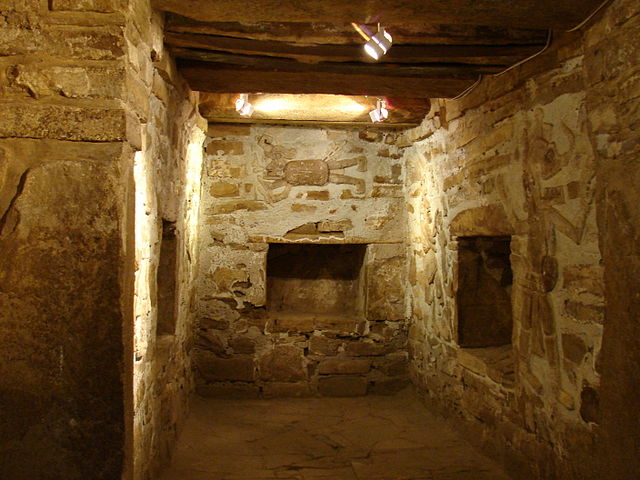The Mixtec culture was a pre-hispanic archaeological culture, corresponding to the ancestors of the Mixtec people; they called themselves ñuu Savi, which means "people or nation of the rain". It had its first manifestations in the Mesoamerican Middle Preclassic period and ended with the Spanish conquest in the first decades of the 16th century. The historical territory of this people is the area known as La Mixteca, a mountainous region located between the current Mexican states of Puebla, Oaxaca, and Guerrero.
Landscape of the Acatlán valley, near San Jerónimo Xayacatlán (Lowland Mixteca Poblana).
Landscape of La Mixteca, near Nativitas Monte Verde (Oaxaca)
Page 37 of the Codex Vindobonensis Mexicanus I. The central scene represents, supposedly, the origin of the Mixtecs from a tree that gave birth to the ancestors of this people.
Red-on-Bayo pottery from the Highland Mixteca. Middle Preclassic Period. MNA Collection.
The Mixtecs, or Mixtecos, are Indigenous Mesoamerican peoples of Mexico inhabiting the region known as La Mixteca of Oaxaca and Puebla as well as La Montaña Region and Costa Chica Regions of the state of Guerrero. The Mixtec culture was the main Mixtec civilization, which lasted from around 1500 BC until being conquered by the Spanish in 1523.
Turquoise mosaic mask. Mixtec-Aztec, 1400–1521 AD
Plate 37 of the Codex Vindobonensis. The central scene supposedly depicts the origin of the Mixtecs as a people whose ancestors sprang from a tree.
Mixtec funerary mask; Grave No. 7, Monte Alban; Museum of Cultures of Oaxaca.
The stucco reliefs in the Tomb 1 of Zaachila (The Valley, Oaxaca) reveal a remarkable influence from Mixtec art. The tomb likely belongs to a person whose name is registered in the Nuttall Codex. Tomb 1 of Zaachila, Central Valleys of Oaxaca, Late Postclassic.







